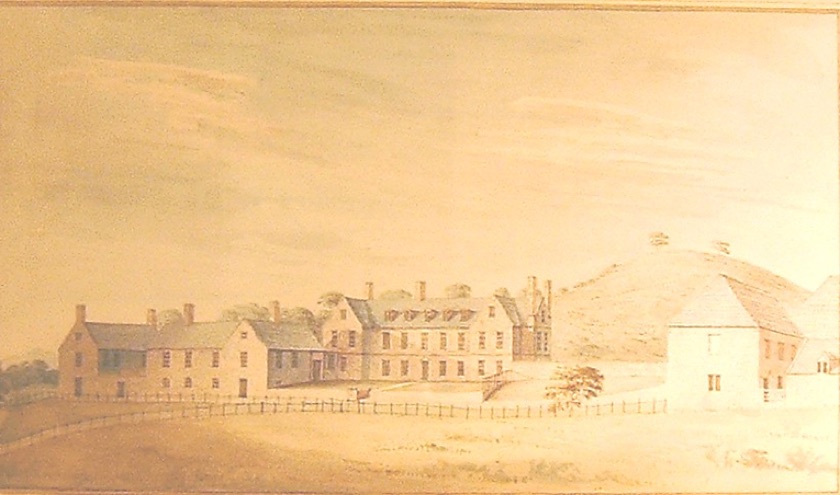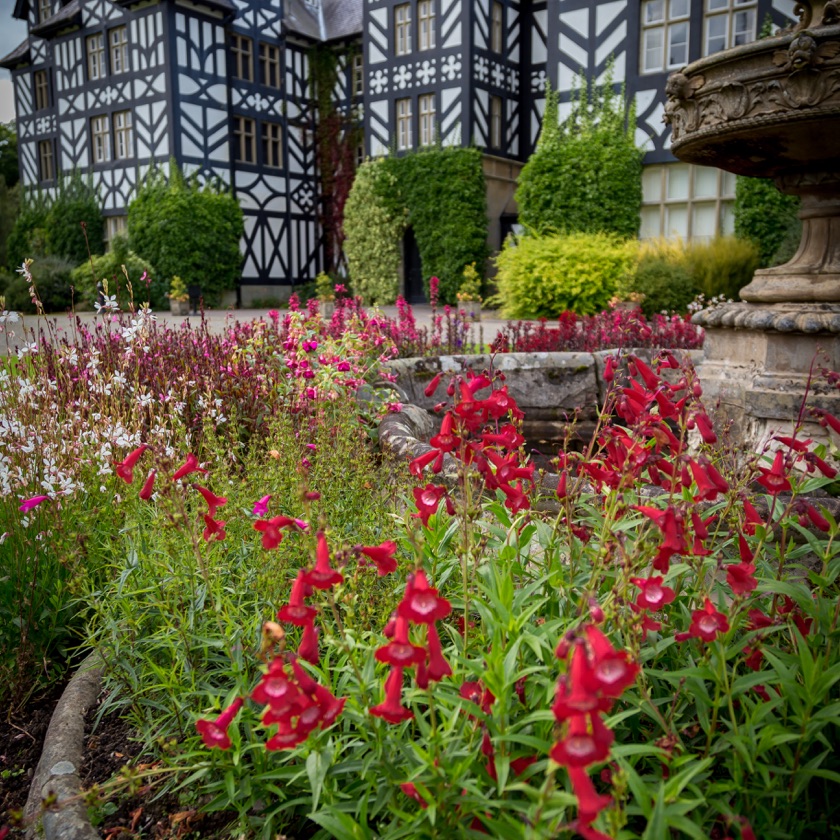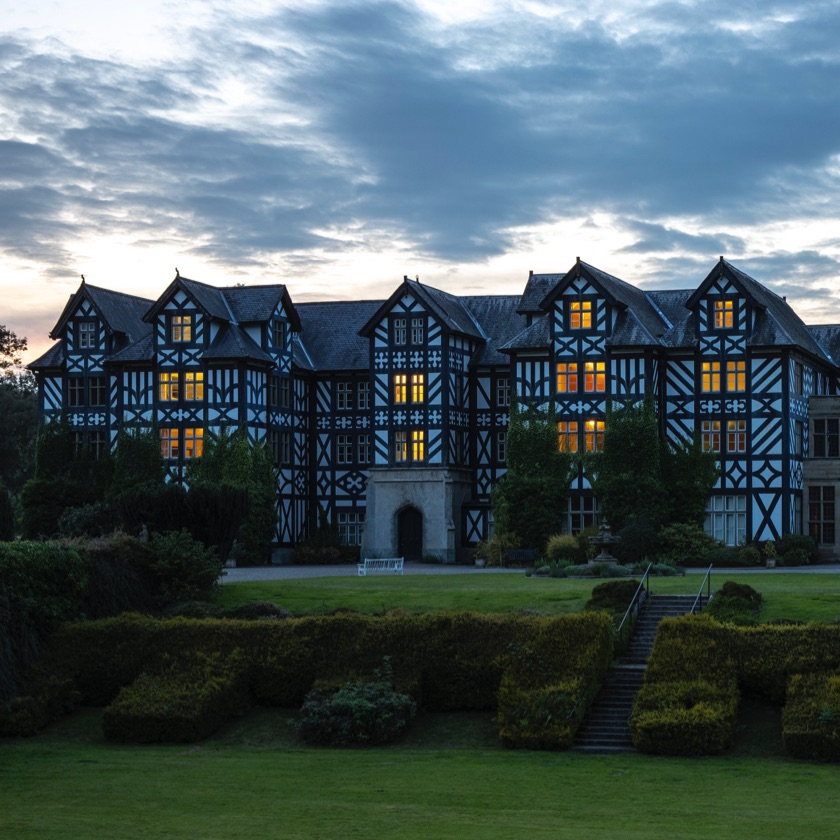- There has been a hall on this land since the 12th century and while the house you see today is about 150 years old, older elements of the house have been incorporated.
- The name Gregynog is thought to derive from either ‘grug’ (Welsh for heather) or the personal name ‘Grugyn’ with ‘og’ added as a place name ending.
- From the 15th century onwards Gregynog was the seat of the Blayney family (Blaenau in Welsh) until Arthur Blayney died in 1795, a bachelor. Even then the house was famed for its hospitality and regularly appeared in the poetry of the period.
- In the 19th century the house belonged to the Hanbury-Tracys, who became the barons Sudeley in 1838. In the 1840s Henry Hanbury Tracy pulled the old house down and rebuilt it in its present form, later adding the fake concrete ‘half-timbering’. He was a pioneer in the use of concrete as a building material. (He built the concrete cottages, farmhouses and the school in Tregynon.)
- The carved parlour known as the Blayney Room, dated 1636, was retained when the house was rebuilt. The carved heraldic shields include one bearing three spear-heads, said to be the arms of Caradog Fraichfras (Caradog Strong Arm) who is said to have been a Knight of the Round Table!
- In September 1889 the Sudeleys hosted an elaborate wedding at the hall with afternoon tea for 2000 people in a tent 150 feet long. The gardens were filled with garlands and flags and everyone from the estate was invited.
- The Sudeleys lost money in the Newtown flannel industry and in 1894 sold the Gregynog estate to Lord Joicey who kept it until 1914, when the estate (18,000 acres) was broken up and sold, mainly to tenants of the farms and cottages.
- The Hall was bought by Gwendoline and Margaret Davies, the wealthy grand-daughters of David Davies of Llandinam, one of Wales’s richest self-made men of the 19th century.
- The Davies sisters lived at Gregynog from 1924, and turned it into an important centre for music, the arts and fine printing. They decorated it with their priceless collection of paintings by Renoir, Monet, Cezanne and many others. These works now hang in the National Museum of Wales in Cardiff but many lesser known pictures and some fine prints and pieces of sculpture remain at Gregynog.
- In the 1930s music festivals were held at Gregynog, attended by famous musicians such as Sir Adrian Boult, Walford Davies and Gustav Holst. Other famous visitors included George Bernard Shaw and Joyce Grenfell.
- Conferences were also held here, often to discuss Welsh economic and political problems arising from the depression of the 1930s.
- The Gregynog Press started up in the early 1920s and became one of the leading printers and publishers of fine books in Britain.
- During World War II Gregynog was used as a Red Cross convalescent home.
- Gwen Davies died in 1951. Her sister Margaret died in 1963, having bequeathed Gregynog to the University of Wales. Courses, conferences and concerts have been held here since 1964.

Gregynog as the Blayneys would have known it.




